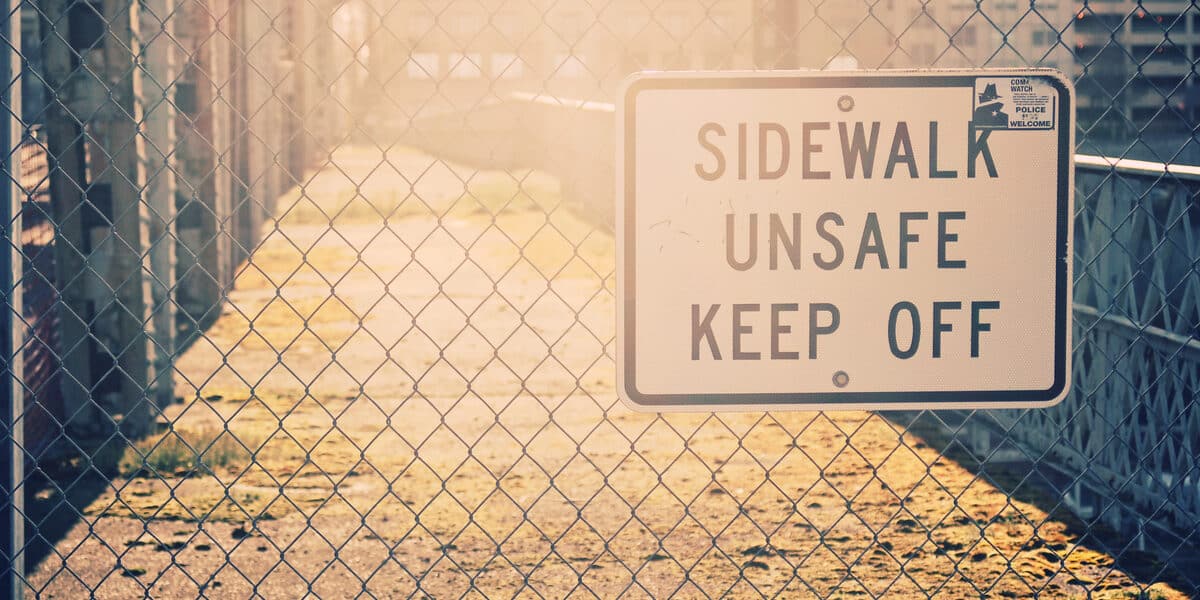Before posting signage at your church, it is important to identify the overall objective your ministry seeks to accomplish. If the purpose of the sign is to shift liability away from the church, simply posting private property signs may not achieve the objective.
Instead, consult with an attorney to determine if it would be more effective to post specific warning signs alerting visitors of any safety concerns (obvious and non-obvious).
In many cases, there are explicit standards laid out by state and local laws regarding signage. Legal counsel should be able to provide guidance and assist with specifications that meet local/state standards for signage that could help protect your ministry.
Effectiveness of Warning Signs
- Generally speaking, the text on signs must be large enough for people to read at a distance.
- Signage must be placed where it is clearly visible.
- People must be able to see the sign before they encounter any hazard that exists on the property.
If the sign is obscured by a tree, then it likely will not be considered effective. If the sign is considered ineffective, it will most likely not absolve the church from liability for injuries that occurred on church property.
- The text on the sign must be in a language that most people who read it can understand. For example, if the sign is in English when most people in the area only speak Spanish, the sign may not be effective.
- The sign may also be considered ineffective if there is only one small warning sign on church property that consists of dozens of acres of land.
Options of Consideration for Posting Signage
- Is there any uneven, cracked pavement in the parking lot where people walk/bike/play where the church should post prominent signage alerting people to watch their step because of uneven walking surfaces?
- If the church notices unwanted visitors biking or skating on church property, consider posting signage stating these activities are prohibited, with additional signs alerting people of any dangers due to uneven pavement.
- If the church is concerned about individuals climbing trees, consider posting prominent signage by trees stating that climbing trees is prohibited, noting the potential dangers involved.
- If there are woods on church property, should there be prominent signage posted about any specific dangers that exist in the woods such as uneven walkways, brush or tree branches where someone could be injured?
- If your church is located along the beach and people cut through church property from the beach, should there be prominent signage alerting visitors of any sinkholes caused by crabs, uneven walkways, or other perils that are non-obvious?
- If your ministry is concerned about visitors smoking on church property, consider posting a no-smoking sign that also warns about the dangers of smoking causing fires.
- Aside from posting signage, should the church consider security cameras to monitor any areas of specific concern?
Churches have a legal duty to occupy reasonable care in maintaining their property. When it comes to maintenance and security of property, “reasonable care” usually means repairing all known and readily ascertainable dangers, and giving visitors notice of any obvious and nonobvious safety issues.
This information is courtesy of Insurance Board, which connects faith-based institutions to comprehensive and customized risk and insurance management solutions anchored in shared trust and sacred responsibility, www.insuranceboard.org.





